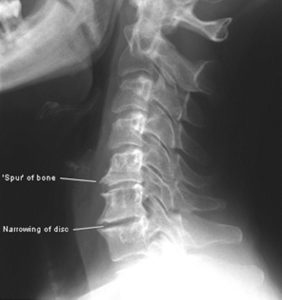Herniated Discs
For many decades, doctors and scientists believed that most back pain was caused by “slipped” or “torn” discs. We now know this not to be true. Disc problems constitute only a small portion of the causes of back pain and rarely require surgery for pain relief.
What are spinal discs?
The discs provide shock absorption, protecting the spinal cord and ensuring flexibility of the spine. They also perform other functions. The spinal discs are essentially ligaments (structures connecting bones) that attach to the top and bottom of each vertebra. Lastly they act as a fulcrum to direct the type of movement through which each vertebra travels.
What are the most common disc problems?
- A disc “bulge” results from slight tears in the outermost fibers of an annulus fibrosis. These small tears can be painful for a short time.
- A disc protrusion/extrusion, also called “herniation,” is a more significant injury. It results from a complete or significant tear of the fibers of an annulus-when some of the nucleus leaks through. A herniation can also be painful and may even cause nerve compression. In the most severe cases, the spinal cord can become compressed.
- The most common disc problem suffered by adults is degenerative disc disease. This occurs when the disc nucleus loses water and small tears develop in it. The body then forms osteophytes (bone spurs), along the edges of the vertebra and the disc space narrows. We used to believe that this was a function of “wear and tear” as we aged. The most recent evidence shows that, most often, there is a hereditary link to the development of degenerative disc disease. Degenerative disc disease can also be caused by trauma/injury.
What are the common signs and symptoms of disc problems?
Common signs of disc problems include, but are not limited to:
- Back or neck pain
- Leg or arm pain
- Stiffness
- Tenderness of the spine and spinal muscles
How are disc problems treated?
Luckily, in most circumstances, disc problems are easily treated with conservative interventions. Early in the course of an acute injury, your doctor of chiropractic will likely set a goal of pain control, using several different physical modalities to reach it. Both ice and heat have shown effectiveness in managing the pain of acute low-back injury. Your chiropractor will help you determine which is most effective for you. In addition, getting you back on your feet and moving as quickly as is safely possible is critical. Typically, the less time you spend in bed, the better off you are in terms of long-term results. You’ll also need to learn not to be afraid to move. If you “baby” your back, in most cases, the long-term results will be worse. Chiropractic spinal manipulation has also been demonstrated to be a safe and effective tool in the management of disc problems. Manipulation is especially effective when combined with therapeutic exercise. In most circumstances, spine surgery and injections are not necessary in the management of disc problems- and they often cause more problems than they’re worth. Your doctor of chiropractic will discuss all available treatment options with you and help you decide on the best course of action.
Can disc problems be prevented?
While regular exercise will help strengthen your back, research has demonstrated that staying fit and using proper body mechanics alone will not prevent injury. The National Institute for Occupational Safety and Health (NIOSH) recommends that individuals do not lift more than 50 lbs. Further, activities that require awkward or prolonged postures and repetitive stresses, place individuals at higher risk for musculoskeletal disorders and disc problems regardless of body mechanics and fitness level. Your doctor of chiropractic can conduct an ergonomic assessment of your work and home activities to help you prevent injury. It is also critically important to have “spinal awareness.” Make a conscious effort, for example, to be aware of what posture you are maintaining when you sit, stand, lie down, work, and exercise. Lift objects with proper posture, including bending your knees, keeping the object close to your body, keeping your back straight and lifting with your legs. Never lift an object by bending over and twisting. You’ll only invite a back injury.

SF Custom Chiropractic
San Francisco’s Favorite Chiropractic Wellness
Center Our highly qualified team is ready to
meet your every need.
New Patients: Please click the button!
Existing Patients: Give us call at (415) 521-3073.
Our Services
Locations
Mission Bay
1365 4th St
San Francisco, CA 94158
Phone : (415) 521-3073
Mon-Fri 8:00am-6:30pm
Sat: 8:00am-1:30pm
Sun: Closed
Russian Hill & Fisherman’s Wharf
2722A Hyde St
San Francisco, CA 94109
Phone : (415) 521-3073
Mon-Fri: 8:30am-6:00pm
Sat & Sun: Closed
The Castro
2215 Market St
San Francisco, CA 94114
Phone : (415) 521-3073
Monday – Saturday: 9:00am-6:00pm
Sunday: Closed
Partner Location
3700 Thomas Rd Ste 207
Santa Clara, CA 95054
Phone : (408) 248-8700
Call to book an appointment